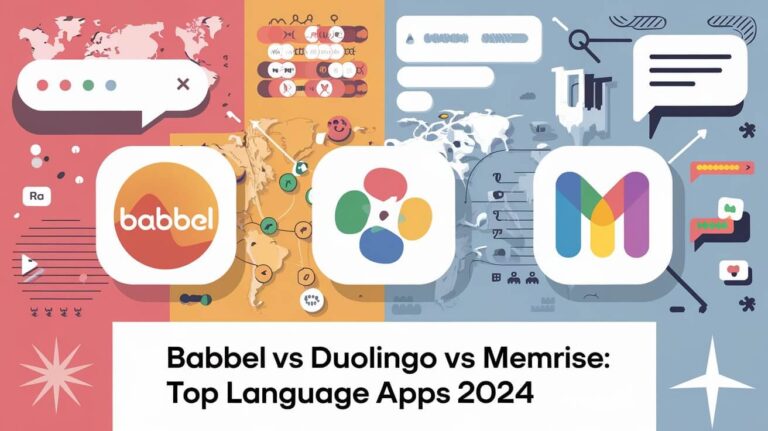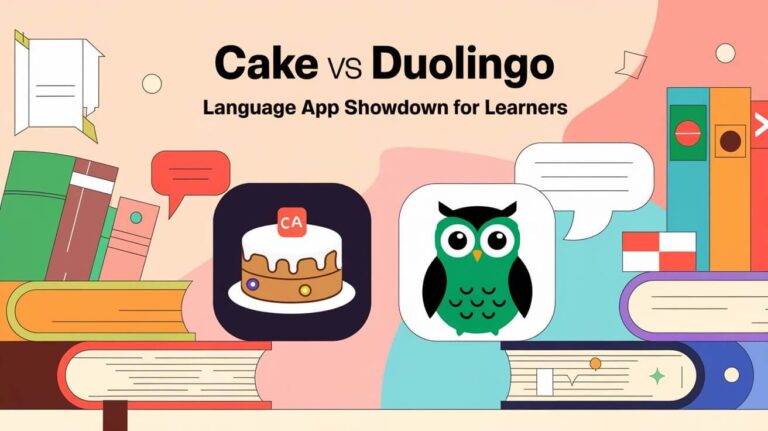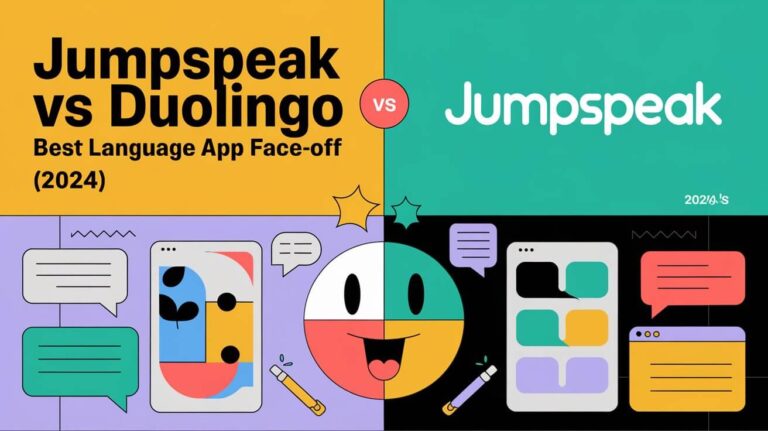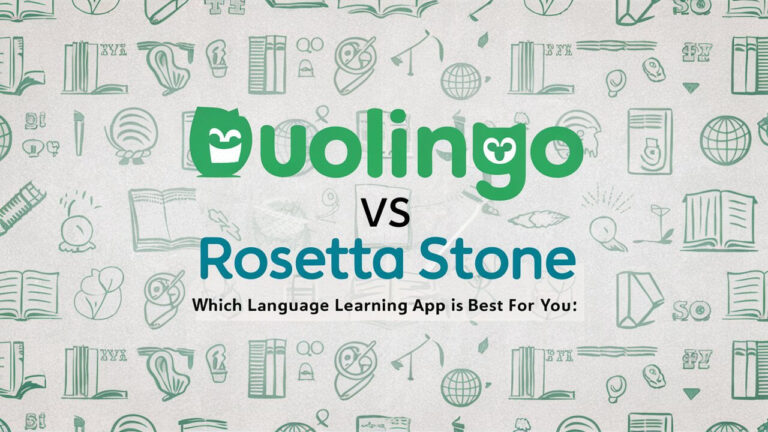Choosing between Drops vs Duolingo boils down to your language goals – Drops excels at vocabulary, while Duolingo offers broader language skills. This guide breaks down both apps’ features, pricing, and results to help you pick the right one.
Quick Facts: Drops vs Duolingo
Core Features
Duolingo takes a full-coverage approach. It teaches grammar, sentences, and vocabulary through game-like lessons. The app uses a mix of writing, speaking, and listening exercises.
Drops zeroes in on vocabulary. It uses pictures and matching games to drill words into your memory. The app skips grammar to focus solely on building your word bank.
Available Languages
Duolingo offers over 40 languages. Popular choices include Spanish, French, and Japanese. They often add new languages based on user demand.
Drops matches this with 50+ languages. Both apps cover major world languages. But some less common languages differ between them.
Price Comparison
Both apps use a preemium model. Duolingo’s free version gives full access with ads. Their Premium plan costs $7.99 monthly for ad removal and offline lessons.
Drops limits free users to 5 minutes every 10 hours. Their Premium subscription runs $13.00 monthly or $69.99 yearly. A lifetime option costs $159.99.
Learning Experience
Duolingo’s Teaching Method
Duolingo uses a tree system. You unlock new lessons by completing earlier ones. Each lesson mixes:
- Multiple choice questions
- Word matching
- Speaking practice
- Writing exercises
The app rewards daily streaks. This motivates regular practice. Lessons get harder as you progress.
How Drops Teaches Languages
Drops uses rapid-fire word games. You learn through:
- Picture-word matching
- Swipe exercises
- Quick recall games
Each session lasts 5 minutes. This prevents burnout and keeps learning snappy. Words are grouped by topic for easy organization.
Time Requirements
Duolingo encourages daily practice. Most users spend 15-20 minutes per day. The app sends reminders to keep your streak alive.
Drops’ free version limits you to 5 minutes every 10 hours. Premium users can practice as long as they want. Most people learn about 1,000 words yearly with regular use.
Free vs Premium Options
Duolingo Free Features
Duolingo’s free version includes:
- All language courses
- All lesson types
- Community forums
- Stories (for some languages)
Ads appear between lessons. You also have limited “hearts” (lives) per day.
Drops Free Limits
Free Drops users get:
- 5 minutes of learning every 10 hours
- Access to all languages
- Basic word categories
Premium Benefits Compared
Duolingo Plus removes ads and adds:
- Offline lessons
- Unlimited hearts
- Progress quizzes
- Mistake review
Drops Premium offers:
- Unlimited learning time
- No ads
- Offline mode
- The “Tough Word Dojo” feature
App Design and User Interface
Duolingo’s Game-Like Approach
Duolingo feels like playing a game. It uses:
- Colorful graphics
- Sound effects
- Points and leaderboards
- Level-up systems
The interface suits all ages. Even kids can navigate easily.
Drops Visual Learning Style
Drops stands out with its modern design. Features include:
- Clean, minimalist look
- Smooth animations
- Clear icons and images
- Color-coded categories
The app focuses on visual memory. Each word pairs with a custom illustration.
Vocabulary Building
Duolingo’s Vocabulary System
Words appear in context through sentences. Users learn:
- Common phrases
- Basic conversations
- Themed vocabulary
The app repeats words often. This helps with memory but can feel repetitive.
Drops Word Categories
Drops sorts words into topics like:
- Food and drinks
- Business terms
- Travel phrases
- Hobbies and sports
Users can pick topics freely. This lets you focus on relevant vocabulary.
Word Retention Results
Duolingo users report good short-term recall. But some struggle with using words in real conversations.
Drops claims users can learn 2,000+ words in a year. Its visual method helps many remember words longer.
Grammar and Sentence Structure
Grammar Lessons in Duolingo
Duolingo teaches grammar through:
- Simple explanations
- Practice sentences
- Common patterns
Tips sections explain rules. But some users find grammar coverage basic.
Drops Language Patterns
Drops mostly skips grammar. It shows some common phrases but doesn’t explain rules. Users need other resources for grammar help.
Extra Learning Tools
Duolingo Stories and Podcasts
Some languages have extra features:
- Short stories for reading practice
- Podcasts for listening skills
- Events and challenges
- Friend leaderboards
These add variety to daily lessons.
Drops Dojo Feature
The “Tough Word Dojo” helps Premium users:
- Practice difficult words
- Review forgotten terms
- Track problem areas
It uses an algorithm to find words you struggle with.
Progress Tracking
Duolingo Achievements
Duolingo gamifies progress with:
- Daily streaks
- XP points
- Achievements and badges
- Weekly leagues
These features keep users motivated.
Drops Statistics
Drops shows:
- Words learned
- Learning accuracy
- Time spent practicing
- Progress by category
Users can see their journey from “Newcomer” to “Conversationalist.”
Real Results
Language Fluency Levels
Neither app promises full fluency. Duolingo can get you to a basic conversation level. Drops builds vocabulary but needs grammar supplements.
For real fluency, use these apps with:
- Language classes
- Native content
- Conversation practice
Time to Reach Goals
Most users need 6-12 months for basic skills. Results vary based on:
- Practice frequency
- Previous language experience
- Learning style
- Target language difficulty
Ideal Users
Best Scenarios for Duolingo
Duolingo works well for:
- Complete beginners
- Casual learners
- People who enjoy game-like learning
- Those wanting basic conversation skills
It’s great for getting started with a language.
When to Choose Drops
Drops fits best for:
- Visual learners
- Vocabulary builders
- People with limited study time
- Learners supplementing other methods
It’s perfect for expanding your word knowledge.
Both Drops and Duolingo offer unique benefits. Many users find success using them together. Duolingo provides structure and grammar, while Drops rapidly builds vocabulary. Consider your goals, learning style, and time commitment when choosing. The best app is the one you’ll actually use consistently.

![Drops vs Duolingo: Complete App Comparison [2025] 1 Drops vs Duolingo](https://duolingoguides.com/wp-content/uploads/2024/10/drops-vs-duolingo.jpeg)





